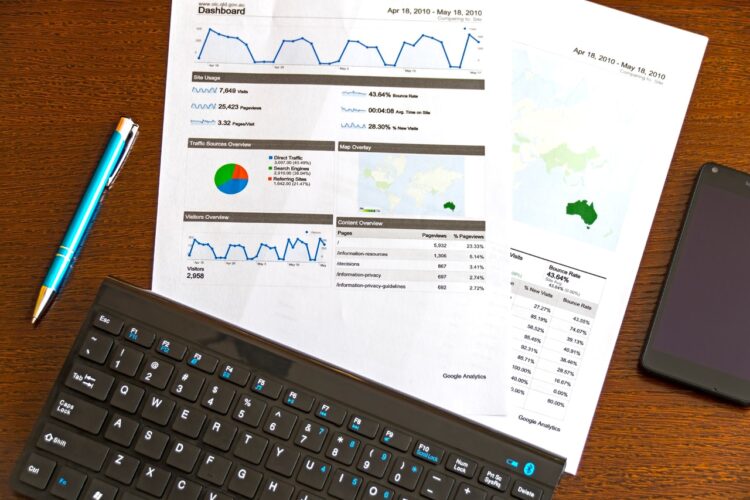In this article, we shall be discussing the components of a business plan. Take note that the number of components differ by virtue of the layout a business plan assumes. Some of them can be comprised of as many as 10 parts or even more. Some can have as few as just 5 components – it just varies mostly from 5 to 10 components. As for our article we shall look at 7 components in an endeavour to be all-inclusive. This will help you to understand any plan layout that you might use or come across.
1. Executive Summary

As simple as this might appear it is an extremely important component of a business plan. It should be precise and concise. It should be so alluring that the reader gets sucked in immediately. An executive summary lays out a brief overview of what the reader is to expect in it. One of the secrets to coming up with an excellent executive summary is to do it after you have completed it. The length of an executive summary matters too – typically anything not more than half of a page is ideal. There are exceptions of course; some businesses can be so elaborate that the length will inevitably be longer. Pointers on what to include are what the business is about, where it currently stands, what it needs, and any noteworthy details.
2. Business Or Company Description
Some can refer to this as Business or Company Analysis. Aspects like vision and mission statements, goals, and objectives should be mentioned here. You have to state the type of industry the business is in e.g. agriculture. Clarify on where it stands as of that moment i.e. is it starting out or it has been operational for a while. Layout how the business operates or is meant to operate; describe its product(s) offerings too. We are referring to things like its legal structure (e.g. sole proprietorship which is quite common), supply and value chain framework and so on. If it has been operational for a while you can highlight some noteworthy accomplishments. If starting out you can describe what you intend to achieve over time.
3. Market Or Industry Analysis

As a business you are going to be operating in a particular industry. This means you shall be entering a particular market that, in most cases, already has pre-existing players. Under this section you have to go over trends and dynamics in your respective market or industry. You also include projections of where the industry is headed. Obviously a look at competitors will also come in here. You will also be looking at market segmentation and demographic characteristics (e.g. ages, income thresholds, buying habits and so on) of the respective segments. How will you strategically position yourself in the market?
That is the crux of all the details you will be discussing here. You cannot come up with a well-polished section here if you do not review literature. You can either blend this with a competitive analysis or you can look at competitive analysis separately. For detailed information on this aspect of business plans, visit Startupbiz Global.
4. Management Or Organisational Structure
The purpose of this section is to explain how the business or company will be structured. You are looking at the human resource aspects, particularly the leadership ones. What you will discuss here depends on the legal structure of your business i.e. things like is it a sole proprietorship, for instance. In essence, you will point out the roles and responsibilities of the people constituting the management team of the business. It is also important to highlight their expertise or qualifications if any. If the structure is comprehensive you can even use diagrammatic depictions e.g. organograms.
5. Products

You will recall that we indicated that in your business or company description you also touch on your product offerings. Under this Products section, you go in into more detail. Products are broadly either goods or services. Comprehensively explain what you are selling or are intending to sell. Go over an in-depth description of each product in terms of what it is and addresses. You could explain your unique value proposition here as you look at what your product(s) addresses. Mention any intellectual property (IP) issues, if any. The process of making the products, along with details of a suppliers framework if any, can be included here.
6. Marketing And Sales Plan
As a business, you are either operating in a market or looking to enter a particular market. How are you going to raise public awareness of what you are selling? What marketing approaches are you going to use to achieve that? What is your niche and how will you strategically target it in your marketing initiatives? What shall you be doing to get conversions i.e. actual sales? What will you do to both attract and retain customers? These and more questions are what you will be detailing under this section. You can also describe details regarding a marketing and sales team (or separate teams) if any and how they will be operating. It is a breakdown of strategies you will use to market and realize sales.
7. Financial Analysis Or Summary

This is arguably the most important part of the business plan. The financials can be the sole reason why you either can get or not get funding (if you are looking for funding). If you are looking for funding you must point how much you need here. That will also be accompanied by how you propose to pay back. If you are a business already operating you will detail your financial history to date. Things like income statements and balance sheets for that period will be relevant here. Be it you are already operating or are starting out you are expected to come up with financial projections. Typically, most plans include cash flow projections for the next 3 years or even 5 years.
These are the 7 basic components of a business plan. There can be variations in the layout but as long as these components are covered that is what matters most.
 Hi Boox Popular Magazine 2024
Hi Boox Popular Magazine 2024



